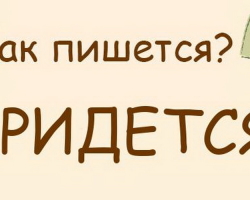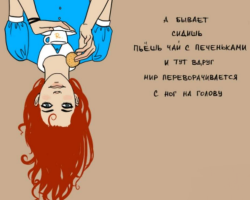What is the difference between autists and ordinary people? This is not a disease.
Content
- Autism: what is it in a simple language, in simple words, what kind of disease is it, what kind of diagnosis of races?
- How to understand that you have autism: manifestation of autistic features in humans is autism?
- How authors differ from ordinary people: how does an autistic child differ from an ordinary child?
- What is the difference between the down from the autistic?
- How the introvert differs from the autistic
- Video: What is the difference between autism and an autistic spectrum disorder?
- Video: signs of autism in adults
- Video: Autism in 5 minutes. The main signs of autism. Statistics of the incidence of autism. The causes of autism
There is a category of children called “children of the rain” or “small aliens” because they are not at all like their ordinary, “normal” peers. Such children see the surrounding world not like the rest, so they do not (or do not want to) interact with it familiar to all ways. Their behavior can be diverse: some are silently and is closed for hours to the toy for hours, others aggressively reject any attempt to establish contact, the third - the day they say incessantly about the same thing. They have one diagnosis - autism.
Read on our website another article on the topic: “Signs of autism. Is autism treated in children?". You will learn how to raise a child with autism.
From this article you will learn how autists differ from ordinary people, downs and introverts. We will also tell you what this is the diagnosis of autism and at what age it is diagnosed. Read further.
Autism: what is it in a simple language, in simple words, what kind of disease is it, what kind of diagnosis of races?

Autism in simple words is a mental disorder that occurs due to a violation of the development of the brain.
- It is characterized by a violation of social interactions due to a decrease in cognitive abilities, impaired understanding and perception of the surrounding reality, limited interests and repeating actions.
- Autism is manifested by emotional fencing from the real world, complete or partial termination of communication.
- It may be vice versa, excessive sociability with the loss of distance associated with the inability to take into account the emotional reaction of the interlocutor (autism inside out).
Speaking in a very simple language, this is loneliness. The autistic is not able to communicate with people and with the world as a whole, he plunges into himself, in his dimension, where there is no more space for anyone. This can be perceived as an unwillingness to communicate, but autists simply do not know how to do this. From the point of view of physiology, this is a violation of the perception of auditory, visual, tactile signals, which partially or completely do not reach the brain centers.
Autism is included in the group of mental disorders characterized by problems with social interaction and called the name (or disorder of the autistic spectrum). Such a diagnosis is made not only by autists. This group includes similar to autism, having a less clear clinical picture and manifested in smoothed forms.
Do not forget: Autism is not a disease. The disease has the beginning, end and period of course, but it is impossible to get sick or infected with autism, it is from birth.
How to understand that you have autism: manifestation of autistic features in humans is autism?
Autism is usually manifested at the age up to 3 years, but it happens that for the first time it is diagnosed in adults. It can be assumed that the pathology was present at a mild form at an early age, but it was not timely identified and developed against the background of stressful situations, various experiences or hormonal changes in the adolescence. How to understand that you have autism?
In adults, the main signs of autism are:
- The immersion "into himself", a person evades communication even with loved ones.
- The facial expressions becomes inexpressive, avoiding the contacts of the "eye to the eye."
- Interest in life fades away, hobbies are forgotten.
- A person becomes passive or excessively irritable.
- Feelings such as duty and wine disappear.
- The feeling of real time is lost.
- A person is not interested in events in his own life.
- The same type of movements appear, the repetition of phrases, sometimes borrowed from songs and films.
It is worth knowing: Autism should not be diagnosed by one symptom, there should be three or more characteristic features for determining the diagnosis by a specialist.
Often people have a question: a person’s manifestation of autistic features is autism? But signs autism in adultsyou should not be confused with manifestations of seasonal depression, overwork, characteristics of character or bad mood. And it is impossible to confuse it with autistic features, such as:
- Styms or monotonous repeated movements (shake with your foot, hands with hands)
- Selectivity in food
- Difficulties with speech
- Unusual reaction to light, sounds, smells, touch
- Unhealthy attachment to any things
- Passivity, aggressiveness, hysteria
- Lack of interest in communication, even in the family
It should be remembered that even the presence of two or three similar features is not a confirmation of autism. Not only children, but also many adults are selected in food, do not like sharp sounds or bodily contacts, and the habit of downloading a completely healthy person can have a habit. If the child has a manifestation of some of these features, but they do not interfere with its normal development, there is no cause for concern. But if the features are exacerbated or new, then this is an occasion to seek advice to the doctor.
How authors differ from ordinary people: how does an autistic child differ from an ordinary child?

Autism is not recognized before the child was born, the signs begin to appear only at the very beginning of his life. So far, the child is very tiny, even a qualified specialist will not always be able to determine and properly evaluate the symptoms causing anxiety. Therefore, only parents, closely observing the development of the baby and comparing his behavior with the behavior of peers, are able to raise alarm in a timely manner.
So, what is the difference between a child autistic up to a year From an ordinary child?
- Authetic child up to a year does not react well to the sounds of rattles and light, does not rul down or make sounds resembling a screech.
- Later, the same age begins to recognize the mother, but, if he finds out, he does not smile and does not reach for her, does not react to her departure.
- The child does not recognize the relatives surrounding him, does not catch their eyes, does not laugh.
- Motor stereotypes are manifested: the baby can sway for a long time in the crib or wave his hands monotonously.
Autists from one to three years old, if you compare them with peers:
- They are not so actively trying to talk, their vocabulary is much less, vowel sounds prevail in speech.
- The development of self -service skills is behind, there are violations of tactile feelings (cold, pain, etc.).
- Such children do not play with anyone, do not know how to handle toys or play them differently than usual, for example, simply laid out in a row.
- Do not slow down adults with requests and do not ask any questions.
- They have echolalia ( repetition of the same phrases) and reversion of personal pronouns ( pronounced in the same way as they hear).
Children - Authetists from three to five years old:
- They do not participate in collective games, preferring to play alone, repeating the same game, draw the drawings similar to each other.
- They are inherent in the stereotype of mechanical movements (to open - to open the crane) or the same type of the purpose of the movements with the body (swing, swing with your hands).
- They adhere to the life of the established rituals, the slightest deviation from which can provoke an outbreak of uncontrollable aggression or “departure into themselves”.
- Such children do not perceive their "I", do not feel their own body and its boundaries.
Adult autistic It also differs from ordinary people:
- Its characteristic feature is isolation, the difficulty in establishing contacts and being away from society throughout life.
- As a result of this, communication skills are violated.
- Authetist children begin to talk much later than the peers, but over time they still master this unnecessary speech skill for them. Therefore, the speech of an adult-anutist is scarce and undeveloped.
- Another important symptom is the inviolability of the inner world, sometimes resembling rituality. It can be a gastronomic habit or strict observance of the daily routine.
- Adult autists pay attention to small details, patterns, smells or sounds that other people do not notice.
- They carefully plan and think about things before starting, experiencing a special interest in highly specialized classes.
I must admit that society is not always tolerant of adult autists. They are often called, shunned, subjected to mockery or humiliated. All this only exacerbates their condition.
What is the difference between the down from the autistic?

Many people still confuse autism and Down syndrome, despite the completely different causes and symptoms of these diseases. How are these states different?
- Autists They live in their own world and do not want to come out of it, they like to be alone, do not like to communicate with anyone. Such children have no connection with the outside world, but they are quite normal in physical terms with relatively preserved intelligence, memory and attention.
- In children with Down syndrome Not only psychological, but also physiological malformations are observed. They are characterized by a decrease in muscle tone, mobile joints, ajar mouth, teeth development defects, a flattened skull, a short neck. Almost all children with Down syndrome have mental retardation of varying severity.
The nature of these diseases is different. Down syndrome - violation of genetics, autism - a set from intrauterine development factors. Their general is a socio-emotional maladaptation. Society hardly perceives people with such pathologies.
How the introvert differs from the autistic

The autistic and introvert has one common feature - immersion in his inner world, voluntary isolation. In the first case, this is a feature of temperament, in the second - pathology. The nature of their isolation is completely different. This is the difference:
- The introvert concentrates on its own inner world, while reacting to the external one. He is able to defend personal boundaries and space, become attached to other people, experience emotions from communicating with them, autistic - no. For autistic, the outside world simply does not exist.
- Introverts are more comfortable to be alone. They are not so sociable, but they are not bored with themselves, they can live a completely independent successful life. But autists are much more difficult to become part of society, although this is possible.
It is completely impossible to get rid of autism. But people learned to live with such incurable diseases as diabetes or bronchial asthma. With the modern development of medicine, it is possible to timely socialize an autistic child, achieve results in mental development, improve the functioning of the brain. Allow him to be a full -fledged member of society, which were the autists of the past - Mendeleev, Darwin, Newton, Einstein.
Video: What is the difference between autism and an autistic spectrum disorder?
Video: signs of autism in adults
Video: Autism in 5 minutes. The main signs of autism. Statistics of the incidence of autism. The causes of autism
Read on the topic:







